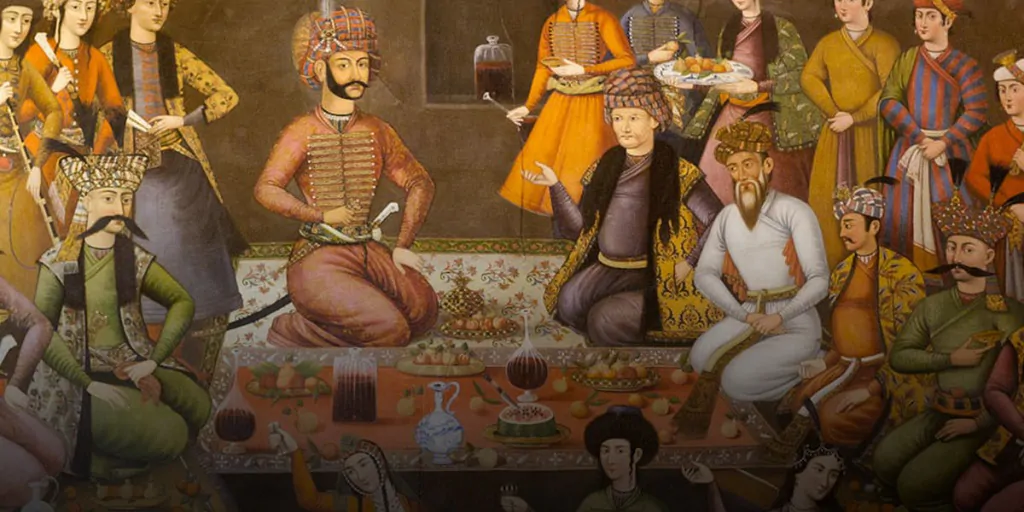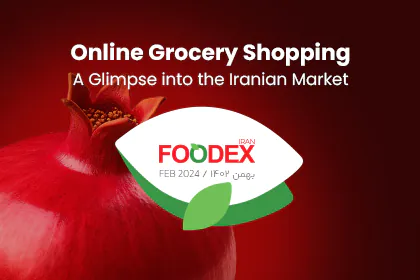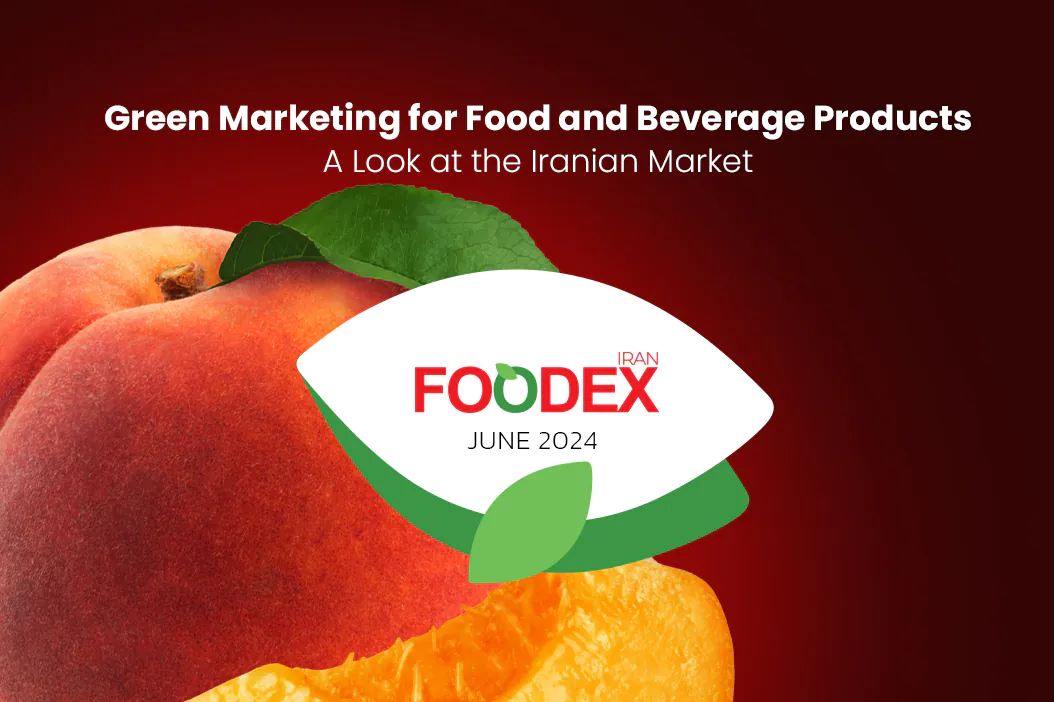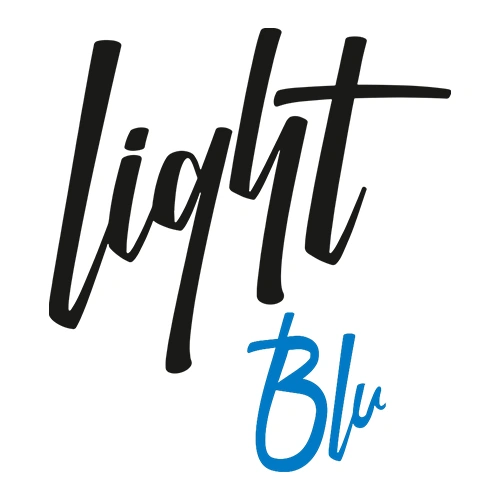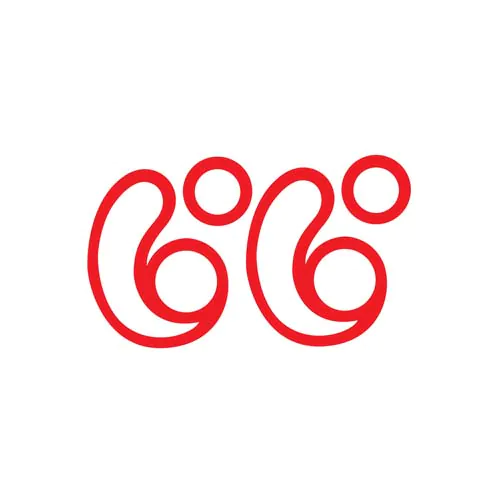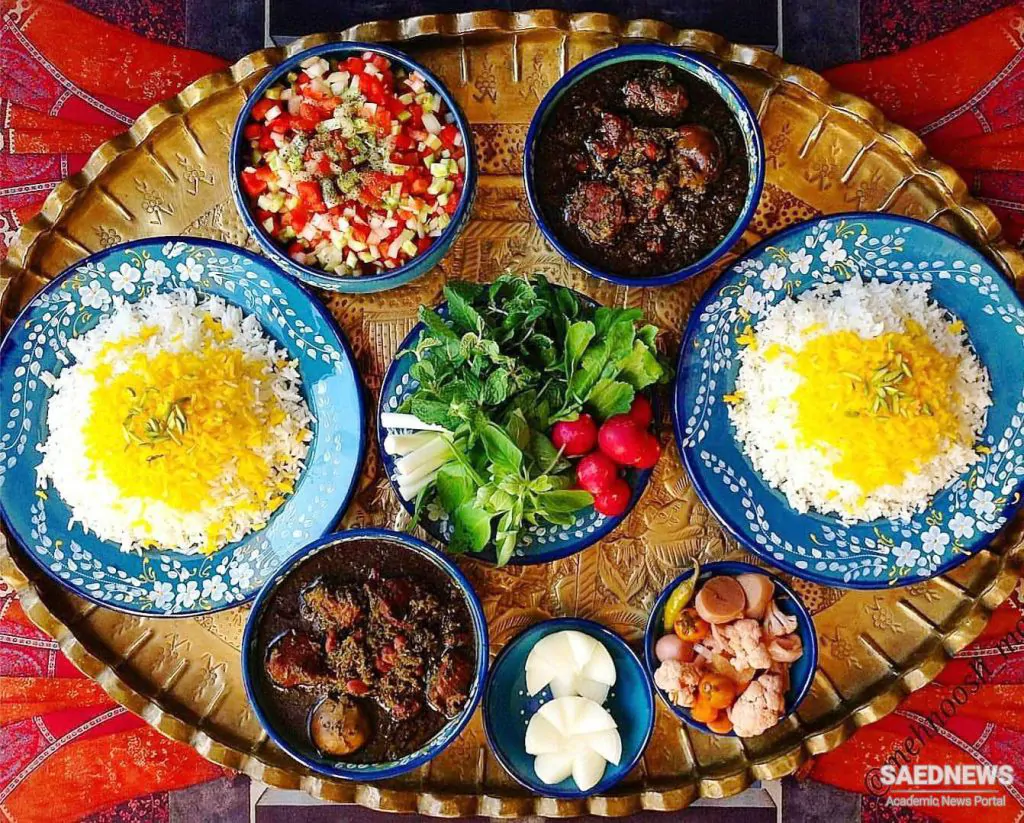The Iranian table (sofreh), more than just a place set for meals, serves as a vibrant stage showcasing artistry, renowned hospitality, and deep-seated cultural connections. Iranian cuisine, boasting a history that spans millennia, is far beyond a mere collection of recipes. It stands as a living narrative of the land’s eventful past, a reflection of its diverse climates and geography, and a manifestation of the collective taste, philosophy, and rituals of its people. Within each dish lies a story, and every flavor encapsulates memories of centuries of cultural exchange and generational innovation.
In this article from Foodex Magazine, we intend to embark on an exploratory journey into the heart of this rich culinary heritage. We will begin by tracing its ancient roots in antiquity, follow its evolution through the rise and fall of empires and periods of cultural exchange, acquaint ourselves with its core pillars, distinctive flavors, and unique techniques, and finally, examine the position of Iranian cuisine on both the domestic and global stages today. Our goal is to present a comprehensive and insightful picture of this treasure trove of taste and culture.
Foodex, as a platform committed to exploring and introducing authentic food cultures, invites you to accompany us on this path. To learn more about other facets of global cuisine and the diverse food traditions of different nations, you can refer to our Food & Drink Tourism section in our magazine. Now, let’s begin this delightful journey into the world of Iranian flavors.
Ancient Roots: Foundations of Cuisine on the Iranian Plateau (Pre-Islamic Era)
Geography’s Bounty: The Influence of Climate on Early Tables
The Iranian plateau, with its remarkable climatic diversity—ranging from towering mountains and fertile plains to warm southern coasts and temperate northern regions—has provided a rich and varied environment for the growth of different plant species and the raising of various livestock since the dawn of history. This unique geographical characteristic formed the primary and defining foundation for the raw ingredients of ancient Iranian cuisine. Native grains like wheat and barley, diverse legumes, a wide array of vegetables alongside wild and aromatic herbs, and fruits such as grapes, pomegranates, figs, and apples were among the first products to grace the tables (sofreh) of the early inhabitants of this vast land, laying the groundwork for future flavors.
From Domestication to Agriculture: First Steps in Culinary Formation
With the development of societies and the advent of settled life in the millennia BCE on the Iranian plateau, the process of domesticating plants and animals also gained momentum and significance. The cultivation of wheat and barley for making rudimentary breads, and the raising of sheep and goats to supply meat and dairy products, became the main pillars of livelihood and, consequently, nutrition for the communities of that time. These fundamental lifestyle changes not only brought about greater food security but also paved the way for the invention and evolution of early cooking methods and food preservation techniques.
Achaemenid Glory (550-330 BCE): Imperial Flavors and Global Exchange
With the rise and expansion of the powerful and vast Achaemenid Empire, cuisine in Iran entered a new stage of organization and flourishing. The empire’s extensive territory, stretching from the borders of India to the Mediterranean shores and North Africa, facilitated unprecedented cultural and commercial exchanges. Consequently, new raw ingredients, such as certain spices from the East (like cardamom or cinnamon via Indian routes), and possibly novel culinary techniques (for example, in bread-making or processing certain foodstuffs) from the western parts of the empire, entered the Iranian fare, enriching it further. The Achaemenid royal kitchen, according to some references in Greek texts as well as analysis of archaeological findings from Persepolis, was highly elaborate, organized, and luxurious. Special importance was given to culinary diversity, ingredient quality, precise cooking methods, and the manner of presentation and garnishing. Achaemenid royal banquets were not merely a display of the empire’s immense power and wealth but also served as an opportunity to showcase the pinnacle of the culinary art and refinement of that era.
The Parthian Era (247 BCE – 224 CE): Continuity and Silk Road Exchange
During the long period of Parthian rule, when Iran was situated as a major power along the vital Silk Road, earlier culinary traditions inherited from the Achaemenid era continued. Simultaneously, extensive cultural and commercial exchanges with civilizations to the East and West (such as Rome and China) via this major communication artery undoubtedly introduced some new influences and made a wider variety of ingredients available. Although direct, detailed written records of the cuisine from this period are scarcer compared to the Achaemenid or Sasanian eras, it can be presumed that bread-making, the use of meat (especially mutton and game), grains, legumes, and local and imported fruits still formed the basis of the diet.
The Sasanian Empire (224 – 651 CE): Peak of Refinement, Rituals, and Food Temperaments
The Sasanian era witnessed a resurgence of centralized power in Iran and, consequently, greater splendor in the court and aristocratic life, which was prominently reflected in its cuisine. The use of a wider array of fruits (like quince, apple, dates, and citrus), nuts (such as walnuts, almonds, and pistachios), and aromatic herbs became more common and varied in dishes and beverages. During this period, slow-cooking techniques, such as preparing various rich stews (khoresht) and hearty soups (aash) that helped to better blend and deepen flavors while tenderizing meats and legumes, were further developed and refined. Sasanian cuisine was also heavily influenced by the rituals, festivals, and beliefs of the state religion, Zoroastrianism. For instance, during important celebrations like Nowruz (the Persian New Year) and Mehregan, specific symbolic dishes using seasonal ingredients with meaningful connotations (like Sabzi Polo ba Mahi – herb rice with fish for Nowruz, where herbs symbolize rebirth and fish represents life and bounty) were traditionally cooked and consumed. Emphasis on the balance of food temperaments (tabāye’), ‘hot’ (garmi) and ‘cold’ (sardi) – rooted in ancient traditional Iranian medicine and promoted by physicians and sages of the time, was a crucial feature of the Sasanian diet. Furthermore, before the advent of Islam in Iran, wine culture and the preparation of various fermented fruit beverages were significantly prevalent among different social classes, especially during ceremonies, feasts, and in aristocratic circles, forming part of the hospitality rituals.
The Islamic Era: Transformations, Exchanges, and Evolution
Islamic Cultural Influence and Arab Exchange: New Ingredients and Food Science
The advent of Islam in Iran in the 7th century CE initiated a period of profound cultural, social, and intellectual transformations that naturally impacted all aspects of life, including cuisine and dietary habits. Some new dietary restrictions, such as the prohibition of pork and the general discouragement of alcoholic beverages, were gradually adopted into the Iranian food culture. However, it is crucial to note that many deep-rooted and rich pre-Islamic culinary traditions strongly persisted, dynamically adapting to the new teachings while still forming the core foundation of the Iranian table.
During this period, cultural and scientific exchanges between Iran and other parts of the Islamic world, particularly with major centers like Baghdad during the Abbasid Caliphate, expanded significantly. Prominent Iranian scholars and physicians, such as Al-Razi (Rhazes) and Ibn Sina (Avicenna), played an unparalleled role in compiling and translating scientific texts, including invaluable works related to medicine and nutrition. These works, emphasizing a better understanding of food properties and healthy diets based on traditional humoral theory, influenced the dietary culture, initially among the elites and gradually among the general population. Furthermore, through these extensive exchanges, some new ingredients like sugarcane and more advanced sugar refining techniques, along with perhaps certain specific spices arriving via more southern trade routes (e.g., maritime routes from India and East Africa), found their way to the Iranian table or saw wider application in sweets and beverages.
Nevertheless, it must be strongly emphasized that these influences were mutual. Iran’s rich and ancient culture and cuisine, especially during the height of the Abbasid Caliphate, exerted a very deep, extensive, and fundamental influence on the court cuisine of Baghdad and, by extension, much of the Islamic world; many sophisticated Iranian dishes, sweets, and table etiquette (ādāb-e sofreh) were eagerly adopted and lauded, becoming integral parts of classical Islamic culinary heritage.
The Role of Turkic Peoples and the Mongol Period: New Textures and Flavors
With the arrival and subsequent rule of Turkic dynasties, such as the Ghaznavids and especially the Seljuks, followed by the Mongol invasion and the Ilkhanate period, Iranian cuisine witnessed the introduction of other new elements and techniques often associated with the food culture of Central Asian nomadic peoples. These groups brought with them a food culture heavily based on animal husbandry and the extensive use of dairy products (yogurt, doogh (yogurt drink), kashk (dried whey), various cheeses, and animal fats/butter), which blended with Iran’s existing dairy traditions, enriching them further.
Additionally, dishes like various types of aash (thick, hearty soups) incorporating noodles (reshteh), reminiscent of East Asian noodles possibly introduced via these connections, and certain filled dough preparations similar to manti or turnovers/pastries, likely became more widespread or took on new, localized forms during these eras. The use of barberries (zereshk) as a tart flavoring and vibrant coloring agent in various rice dishes (polow) also appears to have expanded and gained more popularity during these periods.
The Safavid Renaissance (16th-18th Centuries): Codification of Classic Persian Cuisine
The Safavid period can rightly be considered the era of consolidation and codification for many pillars of the classic Iranian cuisine as we recognize it today. With the establishment of a strong and stable central government after centuries of turmoil, and the court’s special attention to luxury, arts, and culture, cuisine also reached a high level of refinement, diversity, and complexity. Many famous Iranian stews (khoresht), complex and aromatic mixed rice dishes (polow), and various sweets (shirini) and desserts found their definitive forms or reached their peak of perfection during this period.
Safavid royal kitchens (matbakh-e shāhi) were highly equipped and organized, with skilled chefs (bāverchi) competing within them. Fortunately, from this era, the first comprehensive cookbooks written in Persian have also survived. Among the most important are the ‘Kārnāmeh dar Bāb-e tabbākhi va San’at-e Ān’ (Manual on Cooking and its Craft) by Hāji Mohammad-Ali Bāverchi Baghdādi, the personal chef to Shah Ismail I and Shah Tahmasp I, as well as the ‘Māddat al-Hayāt, Resāleh dar Elm-e Tabbākhi’ (The Substance of Life, A Treatise on the Art of Cooking) by Nurallah, chef to Shah Abbas the Great. These books contain precise and diverse recipes for various dishes, pilafs, stews, kebabs, soups, sweets, preserves, and beverages, serving as invaluable sources for understanding the cuisine of that period. Isfahan, the magnificent and flourishing Safavid capital, became not only a center for art, architecture, and commerce but also a crucial hub for culinary culture and innovation. The concurrent flourishing of coffeehouses during this period, as previously discussed, also influenced beverage culture and some associated light fare.
Iran on the Silk Road: Crossroads of Flavor Exchange
Iran as a Culinary Crossroads: The Role of the Silk Road
Iran’s strategic geographical location, particularly its position on the main routes of the legendary Silk Road, played a pivotal role in transforming the land into a major crossroads for the exchange of goods, culture, and, indeed, flavors. This extensive trade network, connecting the East and West of the ancient and medieval worlds, provided an unparalleled platform for the introduction of new raw ingredients to Iran, as well as the introduction of Iranian culinary products and achievements to other civilizations. Caravans traversing these routes brought not only silk and precious commodities but also various spices (like pepper, ginger, and nutmeg from the East), exotic fruits, different varieties and qualities of rice, and even new culinary techniques. In return, travelers and traders became acquainted with the exquisite flavors of Iranian saffron, pistachios, rosewater, and the sophisticated dishes of Persian cooks.
Mutual Influences: The Give and Take of Flavors with East and West
These exchanges along the Silk Road were entirely reciprocal. Just as Iranian cuisine benefited from the ingredients and methods of other regions, it itself exerted profound influences on the cuisines of neighboring and more distant lands. For instance, many culinary historians believe that Mughlai Cuisine in the Indian subcontinent, renowned for its richly spiced and aromatic pilafs, opulent stews, and specific desserts, was heavily influenced by the culinary traditions of the Persian court, especially during the Safavid period. Likewise, some pastry-making techniques or the use of characteristic Persian flavorings like rosewater and saffron found their way from Iran to the Ottoman Empire and even into parts of Europe. Conversely, the introduction of rice cultivation and its sophisticated cooking methods evolving in Iran (with rice itself originally coming from the East), or the influence of certain Central Asian dishes mentioned earlier, exemplify how Iranian cuisine was itself shaped by external influences through these historical connections.
Encountering the New World: Arrival of American Crops
Another significant turning point in the history of Iranian cuisine was the encounter with ingredients originating from the Americas, which gradually made their way to other parts of the world, including Iran, following European exploration and global trade expansion. These new raw materials—primarily entering Iran from the 17th and 18th centuries onwards, often via Ottoman trade routes or through European trading companies (like the Dutch and British)—effectively revolutionized the flavors, colors, and textures of dishes on the Iranian table. Tomatoes, potatoes, various types of bell peppers and chili peppers, pinto beans and other common bean varieties, and winter squash/pumpkin were among the most important of these newcomers. Creative Iranian cooks skillfully integrated these novel ingredients into traditional recipes or invented entirely new dishes featuring them. This integration was so successful that today it is difficult for many to imagine popular stews (like Khoresht-e Bademjan – eggplant stew, or Gheimeh Sibzamini – split pea stew with potatoes), thick soups (aash), pilafs (polow), and even some condiments (torshi) without the now-ubiquitous presence of these ingredients from the New World.
Core Pillars of Persian Cuisine: Ingredients, Flavors, and Aromas
Despite its regional diversity, Iranian cuisine rests upon several fundamental pillars that shape its unique identity and characteristics. Understanding these key elements provides deeper insight into the philosophy and artistry of this ancient culinary tradition.
The Culinary Trinity: Rice, Bread, and Herbs
Rice (Berenj): Undoubtedly, rice holds a place of honor on the Iranian table (sofreh), and its preparation is considered an art form. It encompasses various methods, notably Chelow (fluffy, steamed white rice, often parboiled first, served with a golden crust called tahdig, and frequently adorned with butter and saffron) and Polow (pilaf-style rice mixed and steamed with other ingredients like herbs, legumes, meat, chicken, or dried fruits). The Tahdig (تهدیگ), that coveted crispy golden layer formed at the bottom of the pot (from rice itself, or using potato slices or flatbread), is itself a cherished delicacy and often the most fought-over part of the meal. Saffron, Iran’s “red gold”, plays a pivotal role in the aroma, flavor, and luxurious color of many Iranian rice dishes.
Bread (Nān): Alongside rice, bread (nān, نان) has always been a primary staple of Iranian sustenance and culture. The diversity of traditional breads in Iran, often baked fresh daily in neighborhood bakeries, is remarkable, each with its specific use and characteristics. From Sangak (a whole wheat sourdough flatbread baked on hot pebbles, often accompanying dizi or kebabs), Barbari (a thicker, oval-shaped flatbread with a distinct ribbed texture, often topped with sesame seeds), Lavash (a very thin, soft unleavened flatbread used for wraps and scooping) to Taftoon (a thin, round, slightly leavened bread), each is part of the daily food identity and a constant companion to many meals.
Herbs (Sabzi): Another unique hallmark of Iranian cuisine is the extensive and artful use of fresh and dried herbs and greens (sabzi). Sabzi Khordan, a platter of assorted fresh herbs (like basil, mint, tarragon, parsley, cilantro, cress, spring onions, radishes) served alongside most main meals as a fresh condiment, digestive aid, and palate cleanser, symbolizes this emphasis. Furthermore, complex and highly aromatic mixtures of chopped and often sautéed herbs form the foundation of iconic national dishes such as Ghormeh Sabzi (a rich herb stew with meat and beans, arguably the national dish) and Kuku Sabzi (an herb-packed frittata or bake), lending them their distinctive deep green color, flavors, and aromas.
The Philosophy of Flavor: Balance, Subtlety, and Aroma
Iranian cuisine relies less on overwhelming heat (piquancy) or a single dominant taste, and more on creating balance, complexity, and harmony between different flavors and aromatic layers. The artistry lies in the skillful combination of sour notes (from sources like plums, dried limes – limoo amani, barberries – zereshk, unripe grape juiceو abghooreh, orange blossom water, vinegar, tamarind, or tart yogurt/kashk), sweet (from sugar, honey, date/grape molasses, dates, raisins, apricots, and other dried fruits), salty, and sometimes subtly bitter or astringent elements (like walnuts in Fesenjān or fenugreek in Ghormeh Sabzi). Khoresht-e Fesenjān, with its magical blend of finely ground walnuts, pomegranate molasses (sweet, tart, or a mix), and typically chicken or duck, is perhaps the prime example of this complex flavor balance.
Key spices in Iranian cuisine primarily serve to build intricate aromas and complement flavors rather than just adding heat. Saffron, the world’s most prized spice, plays an irreplaceable role in the aroma, color, and luxurious taste of many pilafs, stews, desserts, and drinks. Turmeric provides a foundational color and earthy flavor to most savory dishes. Cinnamon and cardamom feature mainly in sweeter pilafs, desserts, tea, and sometimes savory dishes. Sumac is the essential tart garnish sprinkled over kebabs, and limoo amani (dried limes) impart a unique, slightly bitter, fermented tartness that adds irreplaceable depth to many stews (khoresht). Additionally, rosewater, various fragrant herbal distillates (arqiyāt) (like orange blossom or willow distillate), nuts (pistachios, almonds, walnuts), and dried fruits (raisins, barberries, plums, apricots…) are widely used to create delightful aromas, rich flavors, and diverse textures in foods, sweets, and beverages.
Proteins and Dairy: From Kebab to Kashk
Meat, particularly lamb and mutton, due to cultural preference and regional livestock suitability, along with chicken and poultry, holds a significant place in traditional Iranian cuisine. Kebabs, often made from minced or marinated pieces of meat (lamb, beef, or chicken) expertly seasoned (typically with onion, yogurt, lime juice, saffron, salt, and pepper) and cooked over charcoal fire or a grill (manghal), constitute one of the most popular and globally recognized categories of Iranian food (examples include Kabab Koobideh, Kabab Barg, Jujeh Kabab, Kabab Chenjeh). In the northern (Caspian Sea) and southern (Persian Gulf, Gulf of Oman) coastal regions, various fish and shrimp also form an important and diverse part of the local diet, prepared using numerous methods including grilling, frying, and stewing.
Dairy products also play a very prominent and vital role. Yogurt (mast), whether plain, strained (māst-e kiseh’i or ‘labneh’ style), or mixed with herbs and cucumber (māst-o-khiār), is consumed as a cooling condiment, side dish, or sometimes part of the main meal alongside many rice dishes and stews. Doogh, a traditional, refreshing, and very popular yogurt-based drink (often carbonated and sometimes flavored with mint), is especially favored in warmer months. Kashk, a unique fermented and concentrated or dried dairy product (typically made from whey or yogurt, needing reconstitution), adds a distinctive savory, tangy flavor and thick texture to certain soups (aash, like Āsh-e Reshteh) and iconic dishes (like Kashk-e Bademjan – eggplant dip, or Halim Bademjanوeggplant porridge). Cheese (panir), especially traditional white brined cheeses like Lighvan or Feta-style cheese, is an indispensable part of the Iranian breakfast, typically served with fresh flatbread (nān), walnuts, and sabzi khordan.
Enduring Techniques and Symbolic Dishes
Iranian cuisine is replete with unique cooking techniques that have evolved over centuries, leading to the creation of symbolic dishes with unparalleled flavors and textures. In this section, we highlight some of the most important of these techniques and their associated dishes.
The Art of Slow Cooking: Iranian Khoresht (Stews)
One of the most prominent features, and perhaps the beating heart of classic Iranian cuisine, is the Khoresht, or stew. Khoresht refers to a wide range of slow-simmered dishes typically prepared with meat (or sometimes without), legumes, various fresh or dried herbs and vegetables, or fruits. The key element in preparing an authentic Iranian Khoresht is the technique of slow and prolonged cooking over gentle heat. This multi-hour process allows the stew to fully ‘settle’ (jā oftādeh, meaning the flavors have melded perfectly and the stew has thickened, often with oil rendering out and rising to the surface), develop deep, complex flavors, and achieve a tender texture for the meat and other ingredients. Each Khoresht possesses its own identity and specific recipe, but among the most symbolic and beloved nationally, and even internationally, are Khoresht-e Ghormeh Sabzi (the iconic herb, meat, and kidney bean stew), Khoresht-e Gheimeh (yellow split peas and meat, flavored with dried limes, often served with fried potatoes or eggplant), and Khoresht-e Fesenjān (a luxurious stew of ground walnuts, pomegranate molasses, and usually chicken or duck). Khoreshts are almost invariably served alongside saffron-infused steamed white rice (Chelow).
Mastery in Rice Cooking: Polow Methods and the Art of Tahdig
As previously noted, rice in Iran transcends being a mere side dish; its cooking techniques have attained the level of fine art, particularly in preparing Polow and Chelow. The primary method for cooking formal Persian rice is Chelow Ābkesh (parboiled and steamed rice). This involves soaking high-quality Iranian rice, briefly boiling it in salted water, draining it (ābkesh), and then steaming it in a pot (often lined with oil or butter at the bottom) over very low heat with trapped steam, frequently with brewed saffron added for aroma and color. This meticulous process results in perfectly cooked grains that are elongated, fluffy, and distinct (known as dāneh dāneh, ‘grain by grain’). Polows employ similar principles but involve mixing the parboiled rice with other ingredients (like herbs, lentils, fava beans, barberries, meat, chicken, fruits, etc.) before the final steaming stage, creating a vast array of flavorful one-pot rice dishes (e.g., Zereshk Polow, Baghali Polow, Adas Polow, Loobia Polow, Sabzi Polow, Shirin Polow, Morasa Polow…). However, perhaps the most creative and adored element of Iranian rice cookery is the art of creating Tahdig, that crispy, golden-brown, savory layer formed at the bottom of the pot from rice itself, or thin layers of flatbread (nān-e lavāsh), potato slices, or even lettuce leaves, which often incites friendly competition among family members for the best piece!
Grilling Mastery: The Flavor of Fire and the Magic of Marinades
Grilling meat, known as Kabab, is another authentic and immensely popular technique in Iranian cuisine, with a reputation that extends worldwide. Iranian kebabs, predominantly cooked over a direct charcoal fire or a special grill (manghal), possess a tender, juicy texture and a delightful smoky flavor that distinguishes them. The main secret to this unique taste and texture, besides using high-quality meat (usually prime cuts of lamb, veal, or chicken), lies in the art of marinating it for several hours (sometimes overnight) in a magical blend of ingredients typically including grated onion, yogurt or olive oil, lime or sour orange juice, abundant brewed saffron, and appropriate spices. This process tenderizes the meat and allows flavors to penetrate deeply. Among the most famous and beloved Iranian kebabs are Kabab Koobideh (skewered minced lamb/beef), Kabab Barg (skewered flattened fillet mignon or lamb loin), Jujeh Kabab (skewered marinated chicken pieces, often bone-in or boneless), and Kabab Chenjeh (skewered marinated chunks of lamb or veal). Kebabs are typically served with saffron Chelow, grilled tomatoes, raw onions, fresh herbs (sabzi khordan), and sumac.
Preserving Flavors and Colors: The Art of Traditional Food Preservation
Rich Iranian cuisine also encompasses traditional, efficient, and ingenious methods for preserving food, allowing the enjoyment of diverse seasonal products throughout the year. These techniques not only extended shelf life but also created new condiments and products with unique flavors and applications. Among the most common methods are:
Pickling (Torshi Andākhtan): Preparing various pickles (Torshi) from almost any vegetable or fruit (like eggplant, cabbage, garlic, onion, mango, sour cherries…) using vinegar, salt, and sometimes spices. These serve as appetizers and flavor enhancers alongside many meals.
Making Preserves/Jams (Moraba Pazi): Cooking various fruits (such as quince, sour cherry, carrot, orange peel, fig…) with sugar to create sweet preserves (Moraba) for long-term storage, consumed for breakfast, dessert, or with tea.
Drying (Khoshk Kardan): A very ancient method for preserving various fruits (like apricots – qaisi, plums – ālu, raisins keshmesh, dried figs), aromatic herbs (mint, dill, tarragon…), dairy products like Kashk (explained earlier), and even noodles (reshteh for Āsh-e Reshteh). These dried ingredients have a long shelf life and often develop flavors and textures different from their fresh forms.
Salt Pickling (Shur Andākhtan): Preserving certain vegetables like cucumbers or cabbage in brine to make salt pickles (Khiār Shur, pickled cucumbers) or sauerkraut-like preparations (Kalam Shur).
These preserved items and condiments form an integral and vital part of the traditional Iranian table (sofreh), adding significant flavor, color, and textural diversity to meals throughout the different seasons.
Modern Iranian Cuisine: Continuity, Innovation, and Global Presence
Like a flowing river originating from the springs of history, Iranian cuisine has not remained static in the contemporary era. While preserving its authentic core, it continues on a dynamic path of evolution and innovation. Understanding the current state of this rich cuisine requires attention to its regional diversity, emerging trends, and its presence beyond Iran’s borders.
Rich Regional Diversity: Hidden Treasures Across Iran
Iranian cuisine is by no means a monolithic phenomenon; rather, it is a rich collection of regional culinary subcultures, each shaped by distinct climates, local products, history, and local ethnic cultures across the vast Iranian plateau. For example:
The cuisine of the northern Caspian region (Gilan, Mazandaran, Golestan): Emphasizes fresh local aromatic herbs (like chuchāq and khalvāsh), high-quality rice, Caspian fish, abundant garlic, and delightful sour and sweet-sour flavors (using pomegranate molasses, bitter orange juice, plums). Dishes like Mirza Ghasemi (smoked eggplant and tomato dip), Baghali Ghatogh (fava bean and dill stew), Morgh-e Torsh (sour chicken), and various stuffed fish exemplify this style.
Southern cuisine (Khuzestan, Bushehr, Hormozgan): Utilizes fresh fish and shrimp from the Persian Gulf and Gulf of Oman, employs generous amounts of spicier and warmer seasonings (like chili and turmeric), tamarind for tartness, and specific regional herbs and spices. Ghalyeh Māhi (fish stew), Ghalyeh Meygu (shrimp stew), Samosas, and Falafel (with regional variations) are symbols of this area.
Azeri cuisine (East & West Azerbaijan, Ardabil): Known for hearty and diverse thick soups (aash, like Āsh-e Doogh – yogurt soup), delicious meatballs (kufteh, especially Kufteh Tabrizi), stuffed vegetables (dolmeh), and generally richer dishes sometimes featuring sharper sour notes (using vinegar or unripe grapes).
Kurdish cuisine: Based on the region’s pastoralism, with an emphasis on diverse kebabs, local soups (aash), use of mountain herbs, and fresh, high-quality dairy products.
Khorasani cuisine: Reflects cultural and historical proximity to Central Asia, featuring distinct pilafs (polow), use of legumes, and some different spices and flavorings, including a notable use of saffron. Recognizing this incredible regional diversity is essential for fully appreciating the true depth and breadth of Iranian cuisine.
Contemporary Trends: From Reinterpreting Tradition to Fusion Cuisine
Iran’s culinary scene today is dynamic and evolving. Alongside the preservation of age-old traditions, we are witnessing noteworthy trends. On one hand, there is a strong inclination towards rediscovering roots; many chefs and restaurants strive to revive and reinterpret traditional, sometimes forgotten, recipes with a more modern aesthetic, refined techniques, and a heightened emphasis on the quality and freshness of locally sourced ingredients. On the other hand, Fusion Cuisine is gradually finding its place, where elements, flavors, or techniques from Iranian cooking are elegantly combined with those from other global culinary cultures, particularly European (like French or Italian) or East Asian (like Japanese), creating entirely new taste experiences. Furthermore, the significant growth of restaurant dining culture and the emergence of a new generation of professionally trained, creative chefs familiar with global trends have substantially contributed to elevating quality standards, menu diversity, and the artistic presentation (plating) of food across the country.
Iranian Cuisine Beyond Borders: Diaspora and the Continuation of Tradition
The extensive migration of Iranians to various parts of the world, especially in recent decades, has led to the formation of large Iranian diaspora communities in North America, Europe, Australia, and elsewhere. These communities play a crucial and vital role in preserving, promoting, and also adapting rich Iranian cuisine within new cultural environments. Iranian restaurants worldwide have not only become social hubs for Iranians living abroad but also serve as cultural ambassadors, significantly helping to introduce Iranian flavors, dishes, and hospitality customs to broad non-Iranian audiences. At the same time, home cooking within these communities, despite challenges like accessing authentic ingredients or the time required for traditional preparations, continues to function as one of the most important pillars for maintaining cultural identity and connection to the homeland. Interestingly, this diaspora cuisine sometimes takes on new and intriguing forms through inevitable or creative influences from the host country’s food culture.
Global Presence Today: The Influence of Persian Flavors
The influence of Iranian cuisine on today’s global stage extends beyond dedicated Iranian restaurants. Certain key ingredients, distinctive flavors, and even some culinary techniques originating from Persia have recently garnered increased attention among international chefs, food writers, and culinary enthusiasts worldwide. Iranian saffron continues to be recognized globally as arguably the world’s finest. Iranian pistachios, pure rosewater, pomegranate molasses with its unique sweet-tart profile, barberries (zereshk) with their beautiful color and tartness, and dried limes (limoo amani) with their special fermented aroma, are increasingly being used by innovative non-Iranian chefs to create novel and unique flavor layers in various dishes, desserts, and even beverages. Even some classic dishes like various kebabs or iconic stews such as Ghormeh Sabzi and Fesenjān have transcended ethnic restaurant menus and occasionally appear on the menus of modern international restaurants as representatives of rich Middle Eastern or Persian flavors, signifying the enduring appeal and high potential for the globalization of this ancient and sophisticated cuisine.
Conclusion: The Enduring Legacy of Persian Flavors
The journey we embarked upon in this article took us from the depths of Iran’s ancient history and culinary roots, through the vibrant Islamic era, the splendor of the Safavid period, and finally to the complexities and innovations of contemporary times. We have seen that Iranian cuisine is far more than just a collection of recipes; it is a reflection of the history, geography, beliefs, art, and spirit of the people of this land. This cuisine tells a story of resilience, creativity, and cultural exchange – a story primarily narrated by its unique flavors and aromas.
The philosophy governing this rich culinary tradition is often based on balance (between flavors, as well as the ‘hot’ and ‘cold’ food temperaments of traditional medicine), respect for ingredients and the intelligent use of seasonal and local products, and the paramount importance of hospitality (mehmān navāzi) and gathering together around the table (sofreh). The subtlety in flavor combinations, the patience required for slow-cooking stews (khoresht) and pilafs (polow), and the artistry involved in garnishing and presenting food all point to a sophisticated culture with a deep appreciation for detail. This precious heritage is not only kept alive in the homes of Iranians across the globe but is also, as we have observed, increasingly inspiring chefs and food enthusiasts internationally.
Iranian cuisine, with all its diversity and history, is an invitation to experience authentic flavors and gain a deeper cultural understanding. Foodex, in line with its mission to introduce and promote authentic and valuable food cultures, strives to present a part of this treasure to you. To gain practical familiarity with this captivating cuisine and prepare delicious Iranian dishes at home, as well as to continue your exploration of the food cultures of other nations, we invite you to read detailed recipes and other specialized articles in our Food & Drink Tourism section on the Foodex blog. We hope this journey into the world of Iranian flavors has been both enjoyable and enlightening for you.
Frequently Asked Questions (FAQ)
What are the main distinguishing features of Iranian (Persian) cuisine?
Iranian cuisine is characterized by its balance of flavors (often skillful combinations of sweet-sour or savory-herbal notes), extensive use of fresh herbs and greens (sabzi), the artful preparation of rice (especially long-grain Chelow and mixed Polow) often featuring a crispy bottom layer called Tahdig, the masterful use of saffron for aroma, color, and taste, and signature techniques like the slow-cooking of stews (khoresht).
How does Persian cuisine differ from neighboring Arabic or Turkish cuisines?
While sharing many historical roots and ingredients, Persian cuisine often places a greater emphasis on fresh herbs, balanced sweet-and-sour flavor profiles (utilizing ingredients like pomegranate molasses, plums, or barberries), and the prominent use of saffron. Neighboring cuisines might focus more distinctly on different spice blends, extensive mezze selections (common in Turkish cuisine), or specific preparations of grains and legumes (common in Arabic cuisines), although vast diversity exists within each culinary tradition.
Why are rice and Tahdig so important in Persian cooking?
Rice (berenj) is a primary staple food in Iran, and preparation methods like Chelow have evolved to produce long, distinct, fluffy grains considered ideal. Tahdig, the highly coveted crispy crust formed at the bottom of the pot (which can be made from rice, potato slices, or flatbread), is considered a delicacy, a hallmark of a skilled cook, and a culturally significant and highly anticipated part of enjoying a Persian rice dish.
Is traditional Iranian food typically spicy (hot)?
No, generally not. Classic Persian cuisine typically focuses on developing complex flavors through aromatic spices like saffron, turmeric, cinnamon, and cardamom, along with herbs and balanced tastes, rather than relying on the heat of chili peppers. While some specific regional dishes, particularly from southern Iran, may incorporate more chili heat, it is not a characteristic feature of the cuisine overall.

